Frost/Freeze Information for Lexington, Kentucky
Records:
Latest spring frost (36°): May 27, 1961
Latest spring freeze (32°): May 20, 1894
Latest spring hard freeze (28°): May 10, 1966
Earliest final spring frost (36°): April 1, 2019
Earliest final spring freeze (32°): March 17, 1929
Earliest final spring hard freeze (28°): February 15, 2011
Earliest fall frost (36°): September 23, 1896, September 23, 1974, and September 23, 2012
Earliest fall freeze (32°): September 30, 1899
Earliest fall hard freeze (28°): October 3, 1974
Latest first fall frost (36°): November 9, 1922
Latest first fall freeze (32°): November 27, 1902
Latest first fall hard freeze (28°): December 4, 1899
Longest growing season: 242 days in 1922
Shortest growing season: 159 days in 1974
Normals:

Midwest Regional Climate Center Freeze Date Tool
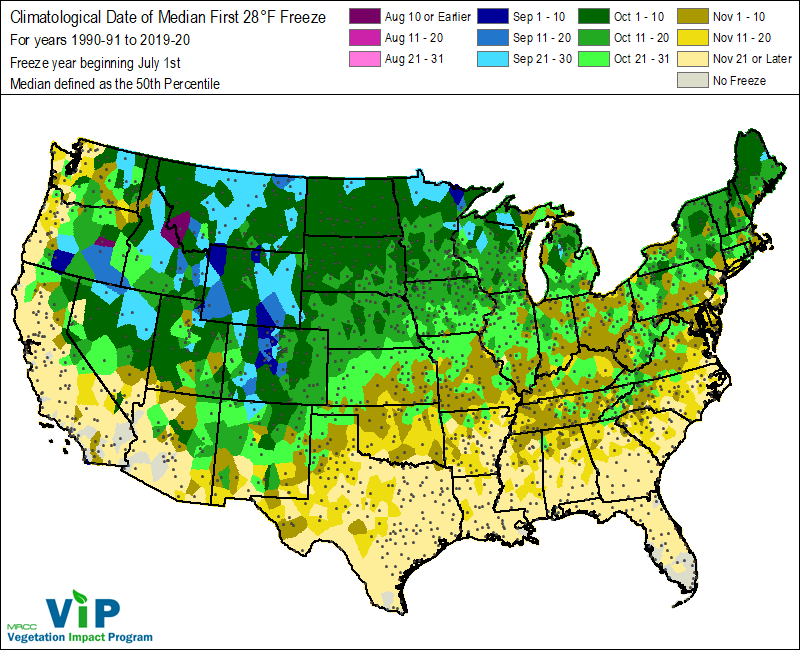
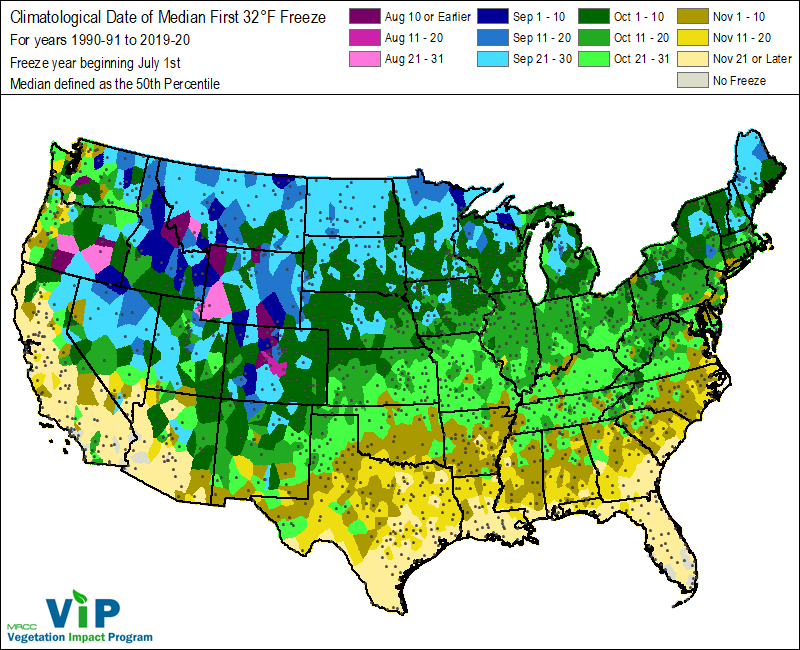

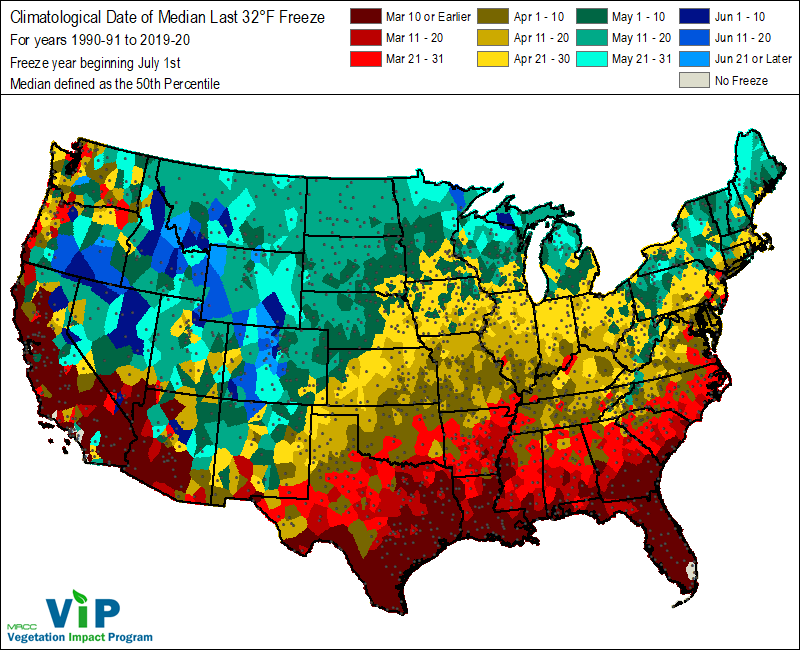
Areawide Frost/Freeze Information
Below is a series of maps showing average first and last dates for selected temperature thresholds. Data were taken from about fifty area observing sites. The data used were from each site's entire period of record (often stretching back into the 19th Century), and thus are averages rather than normals. Due to the limited number of points for which data are available, there is some "bullseyeing" on the map. These maps are for general information purposes only. For more precise information for your exact location, consult the Kentucky Climate Center or the Indiana State Climate Office.
 Last 28 degree temperature in the spring
Last 28 degree temperature in the spring
 Last 32 degree temperature in the spring
Last 32 degree temperature in the spring
 Last 36 degree temperature in the spring
Last 36 degree temperature in the spring
 First 36 degree temperature in the fall
First 36 degree temperature in the fall
 First 32 degree temperature in the fall
First 32 degree temperature in the fall
 First 28 degree temperature in the fall
First 28 degree temperature in the fall
Two tables of graphs follow. The first shows average dates of last spring freeze/hard freeze and first fall freeze/hard freeze. The y-axis shows how many times that event has occurred during each week given on the x-axis. For example, the last spring freeze in Lexington has occurred during the week of April 7-13 34 times (since records began in 1872).
The second table shows how these average dates have changed over time. We broke the historical record down into decades, and found the average date for each decade. The average for the entire period of record is shown with a red line, for comparison. Only decades with sufficient data were used.
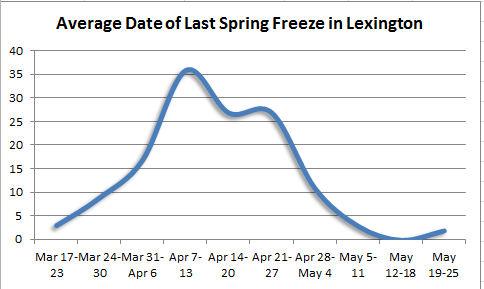 |
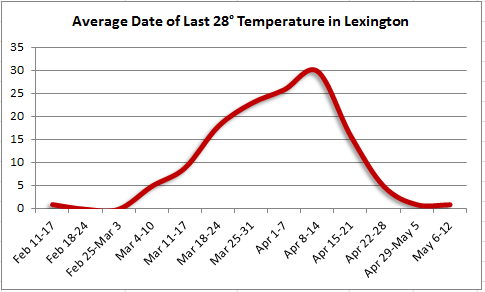 |
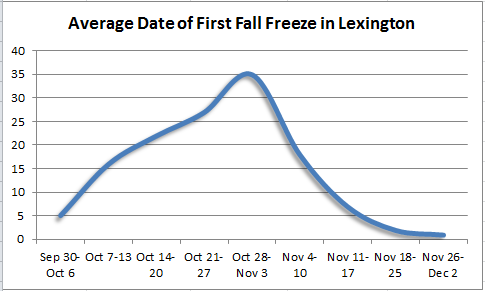 |
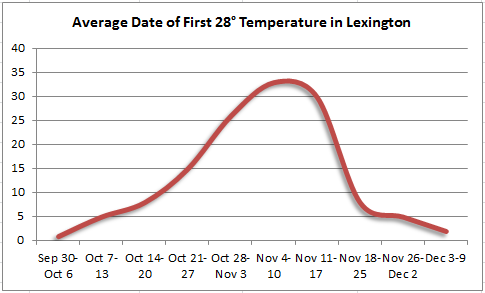 |
 |
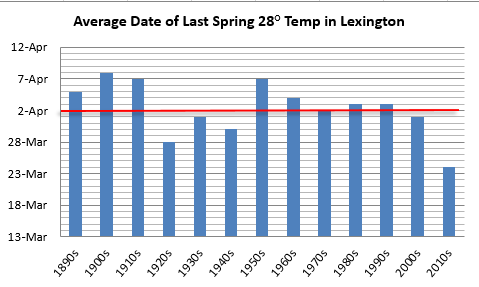 |
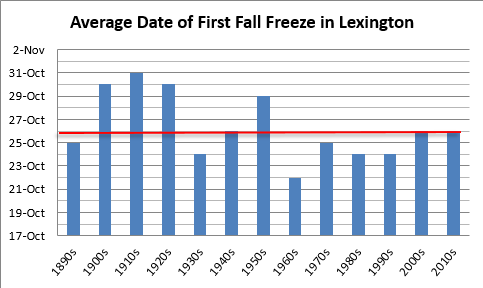 |
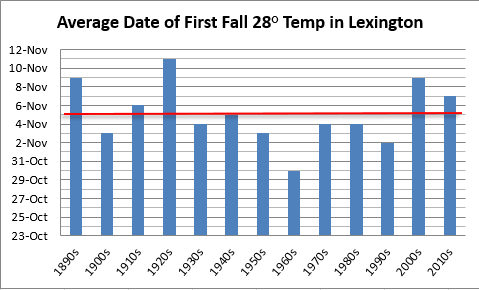 |